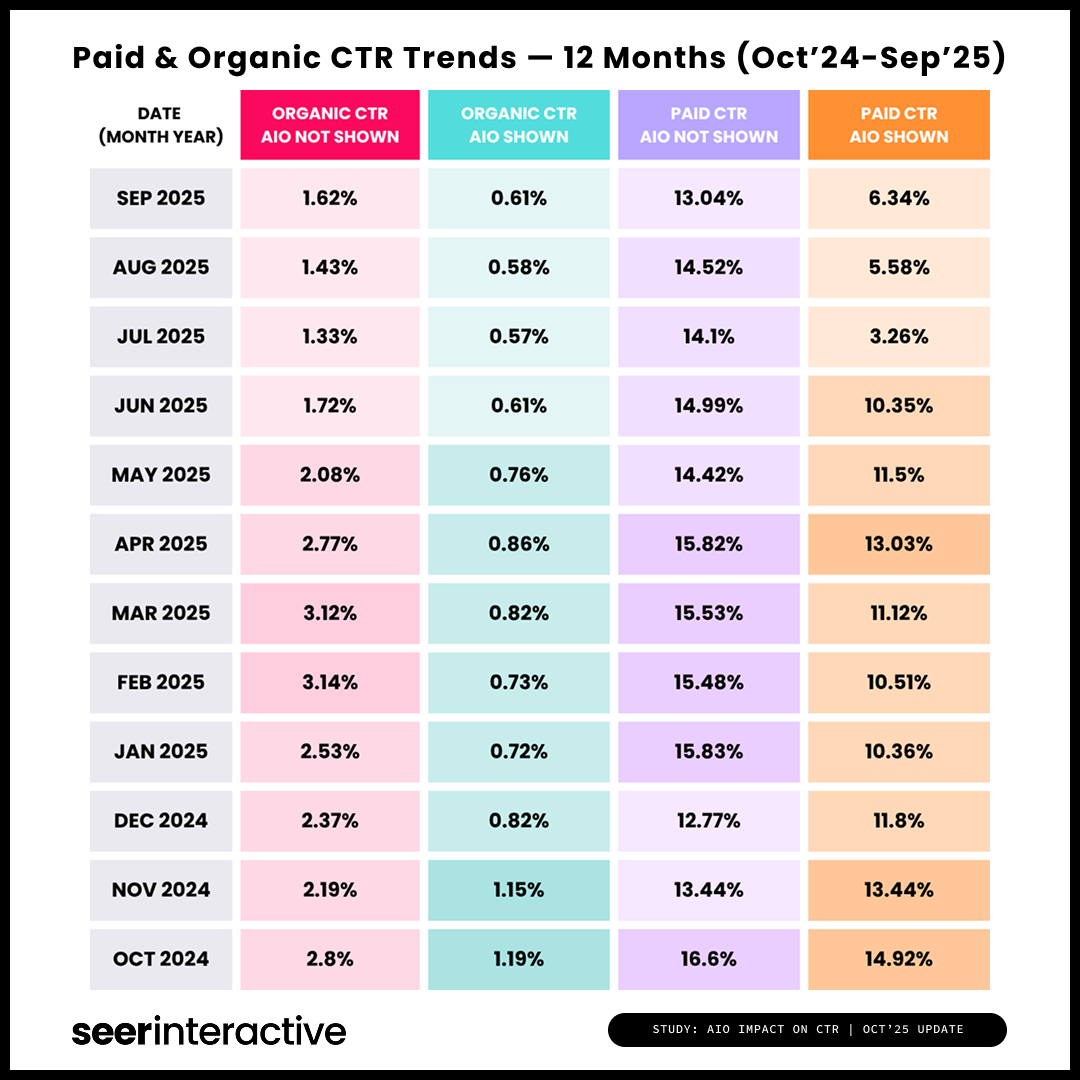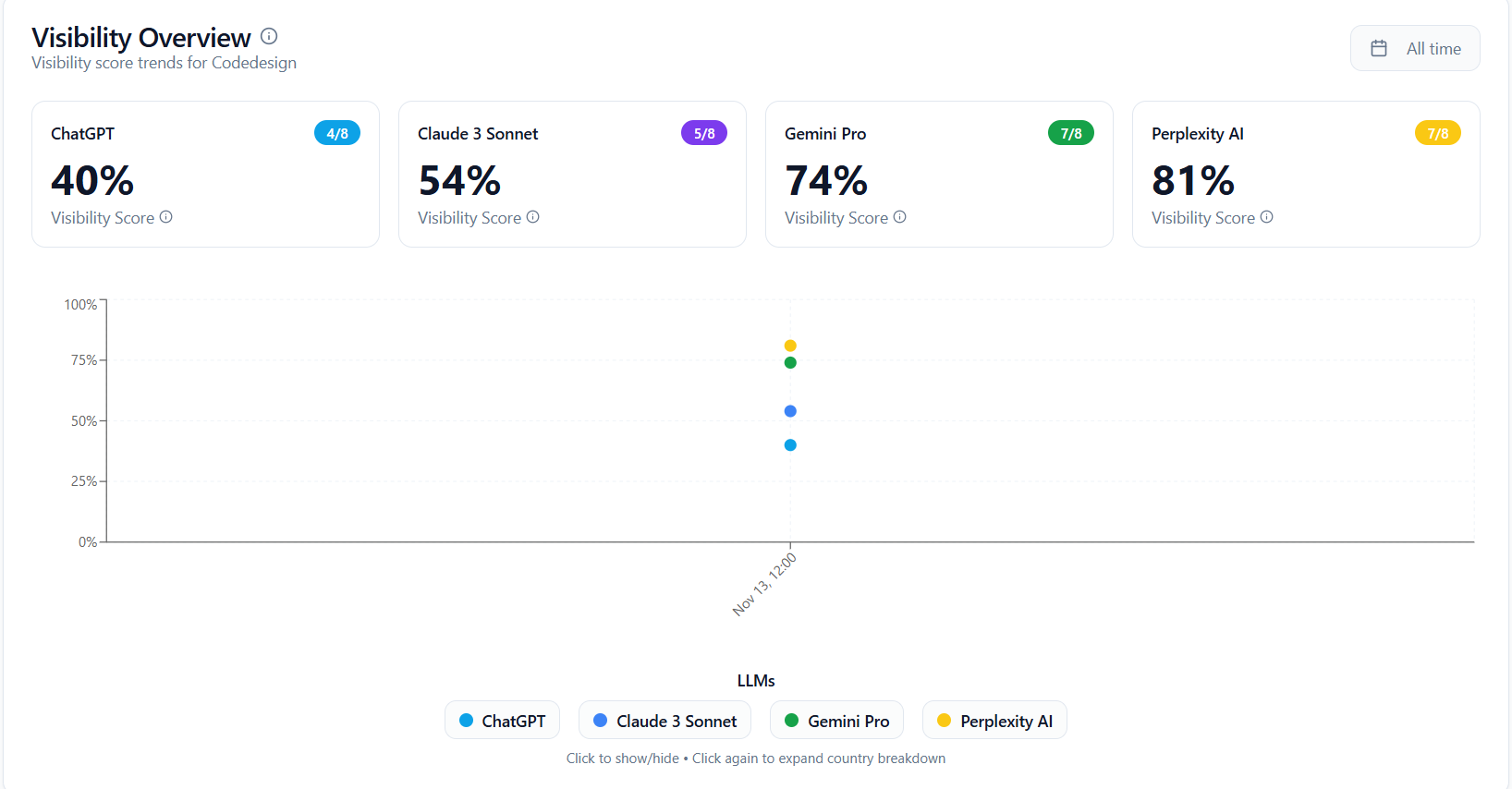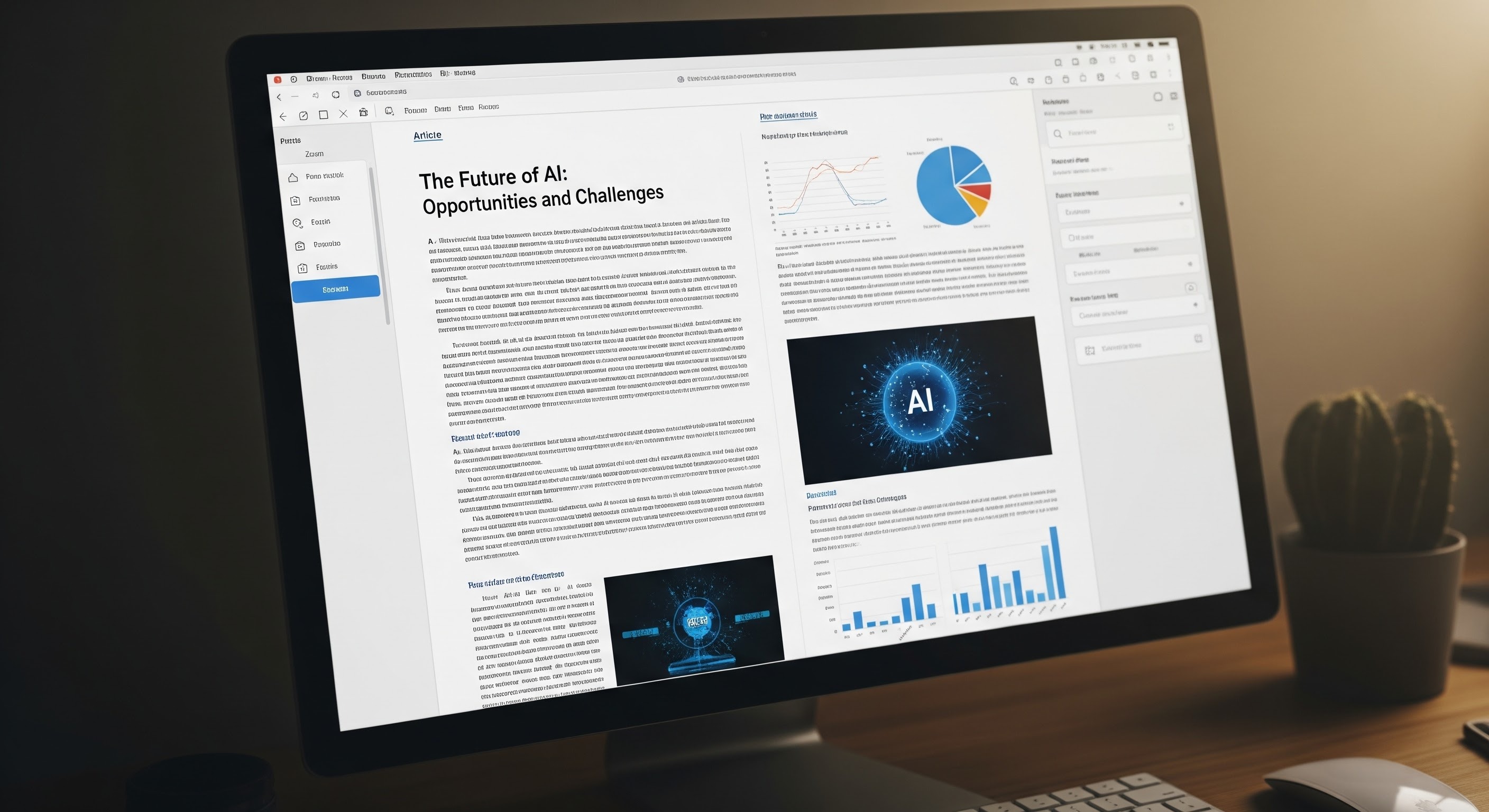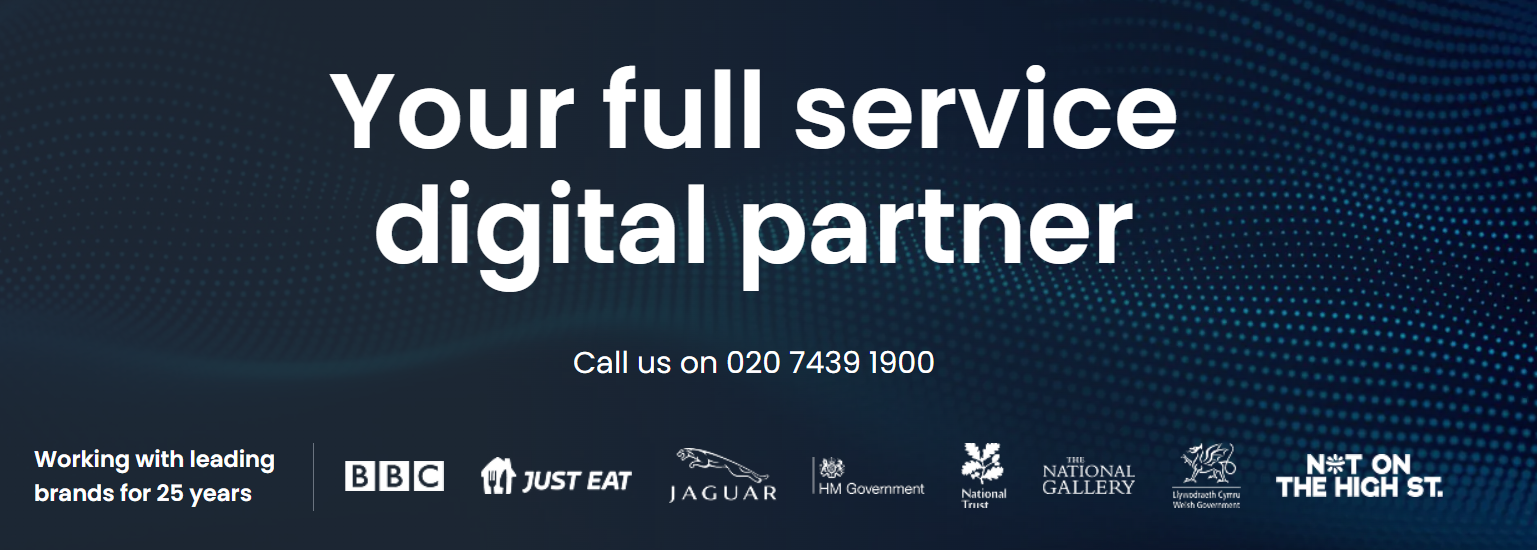13 min to read
During one of the keynote discussions, a content strategist from a major SaaS company, shared their latest traffic reports. The silence in the room was telling. Their organic click-through rates had collapsed. Not by 10%. Not by 20%. By nearly 61% for queries showing Google AI Overviews. Meanwhile, their paid search CTRs tanked 68% on the same queries.

But here's what kept us awake that night—and what should concern every B2B marketing leader: buried in that same data was a glimmer of hope. Brands cited in AI Overviews earned 35% more organic clicks and 91% more paid clicks compared to non-cited brands. In other words, visibility didn't disappear. It transformed. And the winners were those optimizing for a completely different set of rules.
Traditional SEO strategies aren't just becoming less effective—they're becoming a new category of queries. What we need is not an incremental update. We need something new. Something we now call Generative Engine Optimization (GEO).
This is the story of what we learned, what we've implemented for one of our international B2B clients, and how your business needs to fundamentally rethink search strategy in 2026.
Understanding the Scale of the Shift
Before we can solve this problem, we need to understand its true scope.

The CTR decline isn't random. It's not a temporary glitch in Google's algorithm. Seer's research tracking 15 months of consistent decline tells a structured story: informational queries with AI Overviews dropped from 1.76% CTR to 0.61%—a 61% collapse. Even queries without AI Overviews showed 41% year-over-year decline, suggesting the problem extends beyond just AI-driven zero-click searches.
But context matters. Ahrefs analyzed 300,000 keywords and found that AI Overviews correlate with a 34.5% lower average clickthrough rate for the top-ranking page. This isn't a ranking problem. A page ranking #1 still gets crushed because the user's question is answered directly in the SERP before they even see organic results.
Semrush's analysis of over 200,000 keywords revealed something more nuanced: zero-click rates actually decreased slightly after AI Overviews launched, from 38.1% to 36.2%. The real issue isn't that clicks disappeared entirely—it's that the quality and distribution of clicks fundamentally changed. Traditional search volume metrics are becoming nearly useless for understanding search performance.
Here's what Seer's timeline reveals about the velocity of this shift: between June 2024 and September 2025, we watched a complete search landscape transformation unfold month by month. By September 2025, organic CTRs for AI Overview queries stabilized at 0.61%, with no signs of recovery. The research team concluded that marketers should build 2026 strategy around the assumption that CTRs for high-funnel queries will be 20-30% lower than current levels.
For B2B marketers this means one thing clearly: the traditional conversion funnel we've relied on for two decades—attract, engage, convert—is being rewritten in real-time by AI systems making decisions on behalf of users.
Why Your Traditional SEO Metrics Are Lying to You
This is the uncomfortable truth that kept coming up in client calls: your current KPIs don't measure what matters anymore.
We spent the last five years optimizing for rankings, clicks, and traffic volume. These metrics made sense when every search ended with someone clicking one of ten blue links. Google gave us Google Search Console. Analytics showed us visits. We could connect dots between keywords and conversions. The system worked.
That system is broken.

Here's a concrete example from one of our B2B tech clients. They'd maintained consistent #1-3 rankings for "enterprise automation platform comparison"—a high-value query in their space. Their traditional metrics looked healthy. Then August 2024 hit. AI Overviews started appearing on that query. Their rankings didn't move. Their traffic collapsed by 47%.
The page was still ranking. The content was still relevant. But Google's AI now answered the user's question directly in the SERP, citing multiple sources. The client's #1 ranking meant almost nothing because users never clicked through. The visibility they'd spent two years building essentially evaporated.
This is why Seer's research emphasizes a critical point: success metrics are shifting from clicks and traffic toward visibility and share of voice. Your ranking isn't your visibility anymore. Your citation—whether you're mentioned in AI-generated summaries—is.
The research shows 92.36% of AI Overview citations come from domains ranking in the top 10, yet traditional rankings no longer guarantee visibility. Conversely, pages outside the top 10 now have better chances of AI citations than they did for Featured Snippets. In other words: high rankings are becoming a necessary but insufficient condition for AI visibility.
For our international B2B clients spread across European and American markets, this creates a strategic fork.
They can either:
- Option 1 (Traditional): Keep optimizing for rankings using the same strategies that worked in 2023. Watch traffic slowly decline. Treat it as normal industry headwinds. Eventually, discover the strategy is no longer viable.
- Option 2 (Transformation): Recognize that visibility now requires operating in two overlapping worlds—traditional search results and AI-powered answer synthesis. Build infrastructure to track and optimize for both.
The companies winning iweren't the ones debating whether this change was real. They'd already accepted it and moved to Option 2.
Introducing Generative Engine Optimization: The New Framework for Search

Around 2010, when content marketing was emerging as a discipline, someone realized that optimizing for Google alone was limiting. They coined a term: Search Engine Optimization. It worked because the entire discovery ecosystem was still being written by a single algorithm.
We're at a similar inflection point today, but the change is more profound. We're moving from search engines (systems that find and rank pages) to answer engines (systems that understand queries, synthesize information, and generate responses). The primary consumer of your content is no longer a human scrolling results. It's an AI system deciding whether your content is trustworthy enough to cite.
This shift demands a new discipline. We call it Generative Engine Optimization (GEO).
GEO is fundamentally different from SEO because it operates at a different layer. Traditional SEO asks: "How do we rank this page?" GEO asks: "How do we get this piece of information cited by an AI system?"
The differences run deep:
- Traditional SEO optimizes for rankings, keywords, and backlinks. It's about being found.
- GEO optimizes for citations, authority signals, and structured clarity. It's about being sourced.
- Traditional SEO focuses on keyword density and meta optimization.
- GEO focuses on topic coverage, named entities, and semantic HTML.
- Traditional SEO measures success by clicks and traffic.
- GEO measures success by citation frequency, visibility in AI responses, and position of citation (first mention carries more weight).
For B2B companies, this distinction matters enormously. A B2B buyer researching "ERP implementation steps for SMEs" isn't just looking for a page that ranks. They're looking for trustworthy, expert insight. When that query triggers an AI Overview, Google's AI is synthesizing information from multiple sources to give a comprehensive answer. If your company is cited in that answer, you've just become part of the buying consideration—without requiring a click.
The Seer data confirms this: cited brands in AI Overviews earn 35% higher organic CTR and 91% higher paid CTR. Being cited doesn't eliminate clicks; it transforms them into higher-quality traffic because users have already validated your company's expertise through AI's recommendation.
Revisiting the Four-Pillar GEO Framework for B2B Marketing
After working with clients across Europe and North America to navigate this transition, we've distilled the GEO strategy into four interconnected pillars. Each pillar requires a different approach, and all four must work together.
Pillar 1: Authority-First Content Architecture
The foundation of GEO is straightforward: AI systems prioritize trustworthy sources. But "trustworthy" isn't measured the way traditional SEO measures it (backlinks and domain authority). AI systems use what's called E-E-A-T signals: Experience, Expertise, Authoritativeness, and Trustworthiness.
For B2B companies, this means your content strategy should start with expertise signals, not keyword targets.
Start by mapping your organization's unique knowledge. What does your company actually know that competitors don't? What real problems have you solved? What proprietary frameworks have you developed? These become your content pillars.
One of our B2B client had built an internal methodology for managing legacy system migrations. This methodology had been refined through 47 different client engagements. The old strategy would have been: "Let's find high-volume keywords related to legacy systems and create content around them."
The new strategy: "Let's structure our proprietary methodology, document real case studies, and create a comprehensive topical cluster that establishes us as the authority on this specific problem."
The result? Instead of competing against generic content about "legacy system migration," they became the cited expert in AI Overviews for longer-tail, high-intent queries like "how to migrate legacy ERP systems without disrupting operations."
For international B2B marketing, this means accepting that you'll rank fewer keywords but dominate the ones that matter most to your bottom line.
Pillar 2: Structural Optimization for AI Extraction

AI systems don't read content the way humans do. They parse it. They extract entities, relationships, and information through tokenization and semantic analysis. This means your content structure directly affects your citation probability.
The most effective B2B content for AI citation follows what we call the CSQAF framework:
Clear answers first: Start sections with a 45–55-word statement summarizing the key insight. AI systems cherry-pick opening sentences. Your first sentence matters more than your entire paragraph.
Structured data throughout: Use lists, tables, and comparisons. AI's native language is structured data. When you present information in bullet points or comparison matrices, AI systems extract it more reliably.
Quoted authority: Reference 1-2 authoritative sources per major section. Include outbound links to trusted domains. This signals to AI systems that you're synthesizing expert input, not operating in isolation.
Attributed statistics: Add relevant, current data points with proper attribution. AI systems favor content that acknowledges its sources. Research shows ChatGPT prioritizes Wikipedia (48% of citations) and Perplexity favors Reddit (46.7%), but all systems reward properly attributed information.
Focused questions answered: Use question-based subheadings that directly answer common user queries.
When one of our German B2B clients (a HubSpot implementation partner) restructured their "HubSpot for marketing teams" content using this framework, their AI citations increased from 2 per month to 8 per month within 60 days. Same traffic source (Google AI Overviews). Same query type. Different structure. Better results.
Pillar 3: Multi-Platform Authority Building

Traditional SEO isolated your strategy to your website and backlinks. GEO recognizes that AI systems now draw from multiple sources: your website, YouTube videos, LinkedIn articles, industry forums, and third-party reviews.
For B2B companies, this means your content strategy should span platforms. A research study on "financial automation trends" shouldn't just appear as a blog post. It should appear as:
-
A comprehensive website article with structured data (attracts Google AI Overviews)
-
A LinkedIn article or a series of LinkedIn posts (attracts LinkedIn-integrated AI citation)
-
A YouTube explainer video with accurate transcripts and timestamps (attracts multimodal AI citation)
-
An infographic or data visualization shared across platforms
-
A guest contribution to an industry publication or forum
When brands cite your work across multiple platforms, AI systems recognize topical authority patterns. This increases citation probability significantly.
For international B2B marketing, this creates an opportunity. Most competitors haven't embraced multi-platform content architecture yet. By building consistent topical coverage across regions and platforms, you differentiate significantly.
One of our French B2B clients—a B2B e-commerce platform provider—published the same core research across their website, YouTube, LinkedIn, and industry forums simultaneously. Within 90 days, they'd earned citations in AI Overviews across all three major platforms (Google, Perplexity, ChatGPT). Their website clicks didn't increase dramatically, but their brand visibility across the entire generative search ecosystem grew substantially.
Pillar 4: Measurement and Iteration Cycles
The final pillar is infrastructure. You can't optimize what you don't measure.
Traditional SEO dashboards track rankings, traffic, and backlinks. GEO dashboards need to track:
Citation frequency: How often does your content appear in AI Overviews for target queries?
Citation position: Do you appear first in the list (high weight) or fifth (low weight)?
Citation sentiment: Is your company cited as a solution, a warning, or neutral information?
Query coverage: Which query types trigger AI Overviews that cite your content?
Traffic quality: When users visit from AI citations, what's their conversion rate compared to traditional click traffic?
This requires new tools and workflows. Google Search Console now tracks AI Overview impressions, but you cannot filter data to see where impressions come from—traditional search, AI Overviews, or AI Mode. This gap means you need supplementary tracking infrastructure.
We've implemented quarterly benchmarking cycles for our clients. Each quarter, we audit:
-
Which content pieces appear in the most AI citations
-
What structural patterns those pieces share
-
What authority signals they accumulate
-
Where performance lags behind potential
Then we apply those patterns to underperforming content and monitor results.
For our Portuguese B2B clients operating in international markets, this quarterly iteration has become critical. Markets evolve at different speeds. What works for German B2B queries differs from what works for US market queries. Continuous measurement ensures you adapt to regional differences.
Real Client Experiences: From Crisis to Opportunity
Theory is useful. Results are what matter.
Case Study 1: The Enterprise Software Vendor

One of our UK-based B2B clients sells enterprise project management software. They'd invested heavily in traditional SEO over five years—strong rankings, steady organic traffic, consistent lead generation.
By March 2025, their organic traffic from informational queries had declined 34%. Their team initially blamed market saturation. We ran a deeper analysis.
Nearly 60% of their target keywords now triggered AI Overviews. On these queries, their #1 and #2 rankings generated almost no clicks. Users were reading AI-synthesized answers that mentioned 4-5 competing solutions and clicking on none of them initially. Some eventually clicked based on the recommendation, but the volume had collapsed.
We implemented the GEO framework starting with Pillar 1: authority-first content. Their existing "how-to" guides for implementation were solid but generic. We rebuilt them around their proprietary implementation methodology—something competitors couldn't replicate.
We added Pillar 2: structural optimization. Every guide now led with a clear answer, used comparison tables extensively, and cited implementation research from Forrester and Gartner.
We added Pillar 3: multi-platform expansion. They began publishing case study summaries on YouTube with timestamps and transcripts. LinkedIn articles discussing implementation challenges appeared consistently.
Within 90 days, their AI citations increased from 3 per month to 18 per month. Organic traffic from AI Overview queries didn't recover to previous levels (it won't—that's the new reality), but their quality of traffic increased. More importantly, they were becoming the cited solution for prospects earlier in their research journey. This shifted the entire sales dynamic.
Case Study 2: The B2B Services Agency

Another client—a management consulting firm based in Amsterdam—faced a different challenge. They didn't rely on high-volume keywords. Instead, they targeted specific, complex queries like "how to structure a post-acquisition integration program for mid-market tech companies."
These are low-volume queries, but they attract high-value prospects.
The problem: these queries had started triggering AI Overviews. When they did, the consulting firm's thought leadership content rarely appeared. Competitors' generic guides were cited instead.
We implemented Pillar 1 by having them document their proprietary acquisition integration framework. This wasn't new content—it already existed in their IP—but it needed to be formalized and published.
Pillar 2 meant structuring it specifically for AI extraction: clear methodology sections, comparison matrices showing their approach vs. industry standard, cited research from Harvard Business Review and McKinsey.
Pillar 3 meant publishing a supporting YouTube video featuring their team discussing real post-acquisition challenges (with permission from anonymized clients). They created a LinkedIn article series walking through the framework step-by-step.
Result: Within 120 days, they'd earned citations in AI Overviews for 7 high-intent keywords. Traditional traffic metrics actually declined slightly (fewer clicks), but their conversion rate from AI-sourced traffic improved by 23%. More importantly, they were now influencing prospects' consideration at an earlier stage of the buying journey.
International B2B Considerations: Why One Size Doesn't Fit All
For B2B companies operating across European and American markets—and increasingly, global markets—the AI Overview shift creates regional complexity.
Google AI Overviews appear more frequently in US searches (already widespread by mid-2025) than in European searches. The UK saw broader rollout starting August 2024. Germany, France, and Spain are still in earlier stages. This means your international SEO strategy needs to account for different paces of AI integration.
Additionally, B2B query types vary significantly by market. We've observed that US B2B searches trigger AI Overviews on 30% of queries, while European markets show 15-20% trigger rates. This means your content strategy priorities need regional customization.
For European B2B companies specifically, this creates a window of opportunity. While American competitors rush to optimize for AI, European markets are still in transition. Building authority early in these developing markets—before saturation hits—creates a significant advantage.
One of our Portuguese clients operating in international SaaS has built a strategy around this. They're prioritizing AI Overviews optimization for US and UK markets (where the shift is already advanced) while investing more heavily in traditional SEO for German and Spanish markets (where the transition is slower). This targeted approach maximizes ROI during a period of uneven change.
The other consideration: Google AI Overviews tend to cite trusted, major-brand sources preferentially in B2B contexts. But Perplexity (another generative search engine gaining adoption) shows more balanced citation distribution. For B2B companies, diversifying across multiple AI platforms becomes strategically important.
Common Client Concerns and Our Honest Answers
We hear the same objections repeatedly in client meetings. These concerns are legitimate, and addressing them directly matters.
"Won't this hurt our traditional search rankings?"
No. GEO tactics typically strengthen traditional SEO signals. Schema markup, structured content, and improved clarity all support Google's ranking algorithm. The issue isn't that GEO hurts rankings—it's that rankings alone are increasingly insufficient for B2B visibility. You need both strategies working together.
"Does this mean we need to rebuild our entire content library?"
Not immediately. Start by auditing which of your content pieces already appear in AI Overviews. Prioritize optimizing the content that's closest to citation. For content that never appears in AI Overviews (usually transactional or bottom-of-funnel content), traditional SEO optimization remains the priority.
"What if AI Overviews disappear and Google reverts to traditional search?"
This isn't going back. AI Overviews have reached 1.5 billion monthly users and expanded to over 200 countries. Google has invested billions in this infrastructure. It's not a feature that will disappear. Even if Google changes the interface, AI-powered search is the permanent future of search. But the honest answer: over-investing 100% of resources in AI optimization would be reckless. Your best strategy is balanced: 60-70% on GEO optimization, 30-40% on traditional SEO improvement. The balance will shift over time as more query types convert to AI Overviews.
"Can smaller B2B companies compete with large established brands for AI citations?"
Yes. Actually, small companies have an advantage. AI systems prioritize relevance and specificity over brand size. A well-structured, expertly-written piece on a niche topic often outranks generic guides from major publishers. This is one of the few ways that AI Overviews democratize search visibility. Your smaller client wins by going deep on specific topics where they have genuine expertise.
The Strategic Imperative for 2026
This isn't a panic situation that requires abandoning your current strategy. It's a wake-up call that requires strategic evolution.
The companies that will thrive in B2B marketing over the next 18 months are those that recognize a fundamental shift: search visibility now requires simultaneous optimization for two overlapping systems—traditional ranking algorithms and generative AI systems. The strategies aren't contradictory, but they demand different priorities and different metrics.
For B2B marketers specifically, this shift actually creates opportunity. Your content is more complex. Your buyers do deeper research. Your sales cycles are longer. These factors all favor the move toward citation-based visibility. Prospects researching enterprise software solutions now encounter your expertise earlier in their journey through AI Overviews. This is your chance to influence the consideration process before competitors enter the picture.
The window is still open. Most B2B companies haven't implemented comprehensive GEO strategies. Your competitors are still optimizing for rankings and clicks. By moving now—not with panic, but with strategic intention—you build a sustainable advantage.
 |
Thoughts by Bruno GavinoBruno Gavino is the CEO of Codedesign, a Lisbon-based digital marketing agency, with offices in Boston, Singapore, and Manchester (UK). He plays a pivotal role in shaping the agency's growth and direction, particularly in the realm of digital marketing. Codedesign has built a strong team of dedicated professionals, including marketers, developers, and creative thinkers, with a mission to help businesses grow online. Bruno's expertise extends to various aspects of digital marketing, and he has been active in sharing his insights on the impact of significant global events on the digital marketing landscape. His contributions to the field extend beyond his role at Codedesign. Bruno Gavino is known for his broad perspective on digital strategies and innovative solutions that drive the company's vision. |
 |
CodedesignCodedesign is a digital marketing agency with a strong multicultural and international presence, offering expert services in digital marketing. Our digital agency in Lisbon, Miami, and Boston enables us to provide market-ready strategies that suit a wide range of clients across the globe (both B2B and B2C). We specialize in creating impactful online experiences, focusing on making your digital presence strong and efficient. Our approach is straightforward and effective, ensuring that every client receives a personalized service that truly meets their needs. Our digital agency is committed to using the latest data and technology to help your business stand out. Whether you're looking to increase your online visibility, connect better with your audience, get more leads, or grow your online sales. For more information, read our Digital Strategy Blog or to start your journey with us, please feel free to contact us. |
CodeDesign is leading:
- Digital Agency
- Digital Marketing Agency
- AI Marketing Agency







Add comment ×